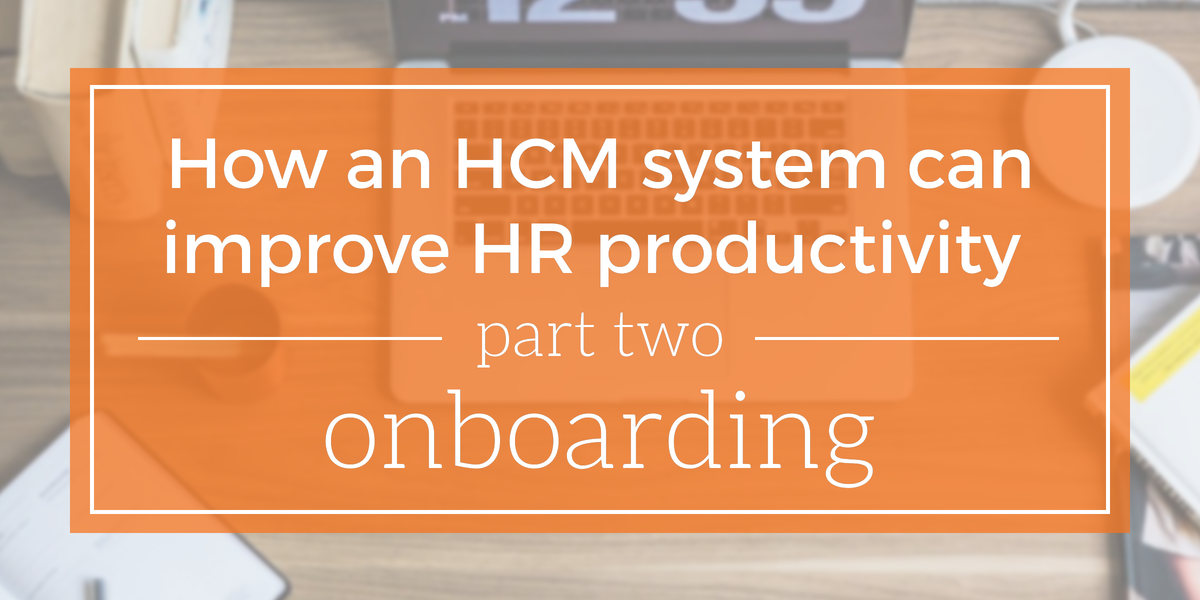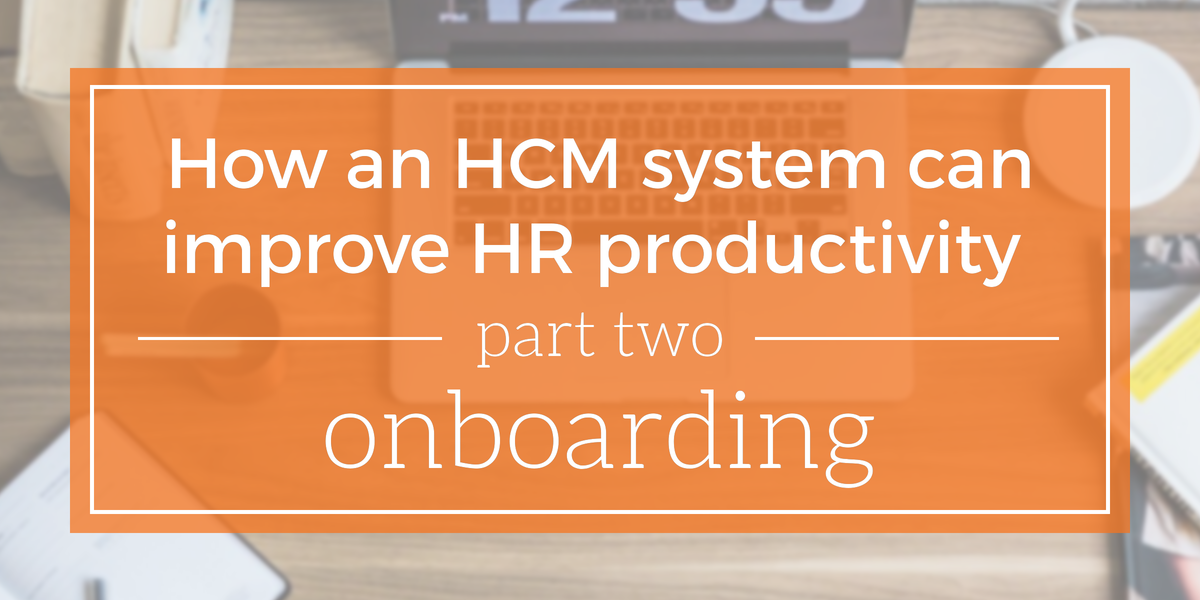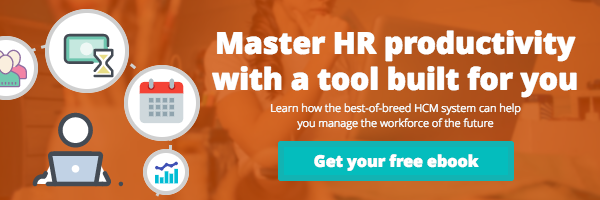
Read part 1: How HCM system can improve HR productivity: recruiting + hiring
As an HR manager, onboarding new employees means you’re responsible for creating the landscape for newcomers. You’re also setting the course for an organization to succeed and thrive. All that can feel like an arduous task. In a desperate attempt to manage the weight of your work, it may be tempting to pass some responsibilities off to the next busy middleman, or let them fall to the wayside altogether. It’s a story fraught with frustration and inefficiency.
Unfortunately, this inefficiency happens too often when management lacks established processes and the right technology, and instead rely on manual processes or outdated systems. In reality, there are solutions that don’t cost an arm and a leg. With a Human Capital Management (HCM) system, you can effectively manage the employee lifecycle from pre-hire to retire. As new hires enter the mix, it’s crucial to establish a sustainable onboarding experience that contributes to positive performance and productivity.
Master onboarding without losing productivity
If your job feels too overwhelming, you’re not alone. According to SHRM, 57 percent of HR professionals listed “overtasked and time-crunched” as a primary challenge in their onboarding practice. But leveraging an HCM system will automate processes so you’re not swamped with tedious tasks.
So where do you start? To maximize effectiveness, SHRM outlined four building blocks of success in onboarding: compliance, culture, clarity, and connection. Depending on your organization and overall strategy, each level varies in use. We’ll explore how you can hit each principle by using an HCM system to guide your workflow.
Automate the Paper-Pushing Process
Once you recruit and hire your talent, the next step is to deliver paperwork. This is where compliance enters the picture. Office policies and procedures, as well as documents like I-9, W-4, and benefit enrollments are key ingredients for a compliant-ready workforce. Sending these forms to new hires before their first day can accelerate the onboarding process and kickstart a smooth orientation. The best HCM platforms include verification tools to ensure accuracy and consistency across all documents. Amending errors consumes a huge portion of a manager’s valuable time. Going paperless eliminates duplicate data entry and error-prone tasks so you can focus on people — not paperwork and processes.
Engage New Hires from the Onboarding Portal
As soon as a candidate signs their offer letter, you can give them access to the company’s self-service onboarding portal. Having visibility into information in a wiki or a portal allows employees to reference and review files at their own pace. This includes company policies on workplace safety, dress code, sick leave, and workplace behavior and expectations. This helps HR increase engagement and reduce administrative workload. Supplying webinars, videos, and manuals further clarifies roles and expectations so employees’ performance doesn’t suffer.
Clarity is key to communicate purpose for employees. It’s equally crucial for fostering cooperation within an entire organization. You may want to consider optimizing your onboarding workflows by involving other team members in the process. Building a cross-functional onboarding team within one database allows everyone to work towards a common vision. New and veteran employees alike can connect as a community of mentors, teachers, and leaders. As a result, new hires will be able to gain the right footing in a new workplace, armed with knowledge of clear expectations and guidelines.
Empower Employees Using a Configurable Dashboard
Beyond the necessary supplements of an onboarding portal, you should always make room for delightful practices. Enter: culture. The best organizations manifest culture in everything they do. Articulating values and norms gives your team a higher purpose to champion. You can craft care and value right into their personal panels. This is an excellent opportunity to send a friendly note, a virtual copy of the employee handbook, welcome messages from teammates, or an explainer video about the organization and its traditions. You can load these resources into custom tabs or as quick links. Consider anchoring FAQs into their dashboard to save time and maximize efficiency. Users will be able to access this information anywhere and anytime they want. Personalizing the experience for future employees is a great way to build lasting relationships for years to come. Weaving company culture into the onboarding process will not only build employee engagement and retention, but it will also empower your workforce to discover reason and belonging in their work.
Equip yourself with the right knowledge and tools
With Fuse’s HCM system, you can find all these benefits to help boost your productivity whether you’re a team of ten or a band of one. Like all valuable experiences, onboarding is a journey, not a destination. It continues 30, 60, and 90 days after the first day. This is why building a sustainable ecosystem using a complete HCM solution helps you manage and engage your diverse workforce from onboarding to offboarding.
As an HR leader, the lessons you impart in an onboarding journey nurture the potential of your workforce. With so much at stake for effective learning and development, managers bear the responsibility of laying the groundwork for employee success. But it’s not a one-size-fits-all approach. How can you tailor content for different roles and functions without spreading yourself too thin?
Read part 3: How an HCM system can improve productivity for HR, part three: Training, where we’ll look at how to master training practices with the right tools.
Ready to learn how Fuse Workforce can make you and your team more productive? Talk to an HR specialist about smarter solutions for your organization.

